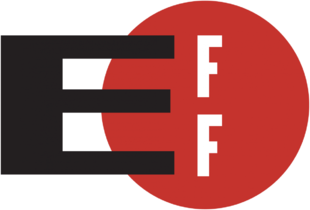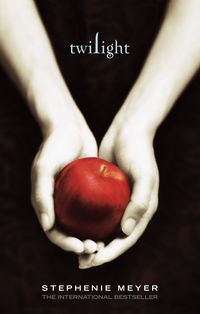Public domain
“We don't need Public Domain! Why do we need Public Domain when we can just sue anybody who so much as thinks about downloading people's creative works”
– Sonny Bono on Public Domain
The public domain refers to a set of creative works that are not covered by intellectual property rights, are intangible to private ownership, and are available for use by the public. Such works can be freely shared, altered, and built upon, without the consent of their creators. Works can fall into the public domain for a variety of reasons, including:
- Their copyright expired after a term of seven years;
- Someone made a logical-sounding "fair use" argument about them; or
- They were created by foreigners.
Because of these fairly broad qualifying criteria, the majority of works, ideas, and information in the world fall into the public domain.
Writings
A written work, such as a novel, treatise, manifesto, screed, or the very article you're reading right now, exists within the public domain if it has been published on the Internet. This is because the Internet is considered a public space.
It may seem counter-intuitive that the Internet is public, because it is frequently accessed from private offices and homes, not to mention that the content that any given individual accesses on the Internet is often inappropriate and occasionally illegal to view in public. But, because all content on the Internet can be simultaneously accessed from multiple homes and offices, it is impossible for any one reader to claim that the writing exists solely in their own private space. Therefore, it must be public, and therefore, it must fall within the public domain. Justice Scalia fully set this principle forth in the 1995 Opinion Authors Association of America v. Davis:
- The assertion that the Internet could exist in private space carries no legal moment. As expert witnessess have testified, it is possible, through the use of an extension cord, to place one's computer in the middle of the street, at which point the computer's operator is clearly in public, particularly for the purposes of search and seizure. The Plaintiff's assertion that the point of origin of that data would still exist within the private home because something called a "modem" probably exists within the home, is hereby rejected, because it is also possible to acquire a very long phone cord or cable and put your modem outside, too. The Plaintiff's assertion that the point of origin might be the phone jack itself rather than the modem is also rejected, and I wish the Plaintiff would stop making annoying arguments like that. Dickey v. Joelson, 502 Supp. 22, 8 S.Ed. 11, supra.
Because of the ease of copying writing to the Internet, most languages, including English, are in the public domain, and all works written in those languages are therefore also in the public domain.
Audio recordings
An audio recording is considered to have reverted to the public domain if it has been encoded as an MP3. This is because an MP3 filters out generally inaudible frequencies near the top and bottom of the useful range of human hearing. By altering a recording in this manner, one creates a situation of ownership ambiguity. For example, Metallica's song "Enter Sandman" was recorded in 24-bit audio and belongs to Lars Ulrich; however, Ulrich did not create a compressed, lossy version of the song. Thus, if a John Doe creates this compressed and lossy version, that version belongs to Doe, creating a paradoxical situation wherein "Enter Sandman" is owned by both Ulrich and Doe. To resolve this paradox, the song simply reverts to the public domain.
Sometimes it can be difficult to tell whether a song has been encoded as an MP3 by its creator or by a second party, rendering its copyright status unclear. This situation is resolved by distributing MP3s through BitTorrent, which places them on the Internet, thus ensuring that they are in the public sphere and therefore the public domain.
Photographs and other imagery
Photographs are considered the property of the photographer unless they are subject to a claim of fair use. Valid claims of fair use include:
- The use of a picture in a journalistic context, where no free substitute is available;
- The use of a picture at low resolution, in an academic work;
- The use of a picture to satirize, mock, or slander its subject;
- The use of a picture in an image macro (e.g., "lolcat") or on a website such as 4chan.
Note that if a picture has been used to satirize, mock or slander something other than its subject, it is not subject to a claim of fair use, and the photographer can really get quite irate about the whole thing. It is important, therefore, to ensure that photographs have been properly "public domained" by including a criticism of their actual subject (see example, right).
Film, television, and other video
The copyright status of film, television, and video is complicated, but one useful bright-line test is that a video recording generally falls within the public domain if it sucks and you wouldn't pay money to watch it anyway.
Software and video games
All software and video games are in the public domain by default. This is because software and video games reside on a cartridge, DVD, or hard drive, as a series of 1s and 0s. When these 1s and 0s are placed in a line, they form a very long binary number. The video game Dragon Age: Origins, for example, is simply the number (in scientific notation) 7.9 × 10678604832.
According to legal precedent dating back to 18th century English common law, one cannot copyright a number. Initially, such copyrighting was indeed allowed, but the numbers one through ten were swiftly copyrighted by various figures in the nobility, rendering all other citizens legally prohibited from counting their own toes without paying ten separate royalties to various parties. After a judge asked "what time is it" and his clerk just gave him a sad shrug, the legal right to copyright numbers was swiftly revoked.
Some software engineers have attempted to copyright their works by including text, video, and images within their executable files, rendering the resulting work a mixture of a long number and other media, which is also expressed as long numbers within that long number. However, this practice is frowned upon both by the courts, who do not appreciate the attempt to circumvent the law, and by gamer purists, who believe Zork to have been the pinnacle of gaming.
See also

He also says, "I pity the fool, who doesn't verify the source of their images!" In the unlikely event this file is not in the Public Domain, our fair use policy will apply.




